Black dot on bottom of foot. Black Dots on Feet: Causes, Symptoms, and Treatment Options
What are the potential causes of dark spots on the bottom or top of feet. How can you differentiate between harmless spots and signs of melanoma. When should you seek medical attention for black dots on your feet.
Common Causes of Dark Spots on Feet
Dark spots on the feet can be concerning, but they’re often harmless. Understanding the potential causes can help alleviate worry and determine when medical attention is necessary. Here are some common reasons for black or dark spots on feet:
- Plantar warts
- Blood blisters
- Petechiae (tiny blood spots under the skin)
- Ingrown hairs
- Hyperpigmentation
- Melanocytic nevus (mole)
- Traumatic tattoo (embedded debris from an injury)
While many of these causes are benign, it’s crucial to monitor any changes in size, shape, or color of spots on your feet. Persistent or changing spots warrant a visit to a dermatologist for proper evaluation.
Recognizing Signs of Melanoma on Feet
Melanoma, a serious form of skin cancer, can develop on the feet, including the soles and between toes. Early detection is vital for successful treatment. To identify potential melanoma, remember the ABCDE rule:

- A – Asymmetry: One half doesn’t match the other
- B – Border: Irregular, jagged, or scalloped edges
- C – Color: Varied shades within the same spot
- D – Diameter: Larger than 6mm (about the size of a pencil eraser)
- E – Evolving: Changes in size, shape, or color over time
Are all dark spots on feet cancerous? No, most are benign. However, any spot exhibiting these characteristics should be examined by a dermatologist promptly.
Plantar Warts: A Common Culprit for Black Dots
Plantar warts are a frequent cause of black dots on the soles of feet. These warts are caused by the human papillomavirus (HPV) and often appear as small, rough growths with tiny black dots in the center. These dots are actually small, clotted blood vessels.
How can you differentiate plantar warts from other dark spots? Plantar warts typically:
- Have a rough, grainy surface
- Interrupt the normal lines and ridges in the skin of your foot
- May be painful when walking or standing
- Often appear in clusters, known as mosaic warts
While plantar warts can resolve on their own, they may persist for months or years. Over-the-counter treatments are available, but stubborn warts may require professional medical treatment.
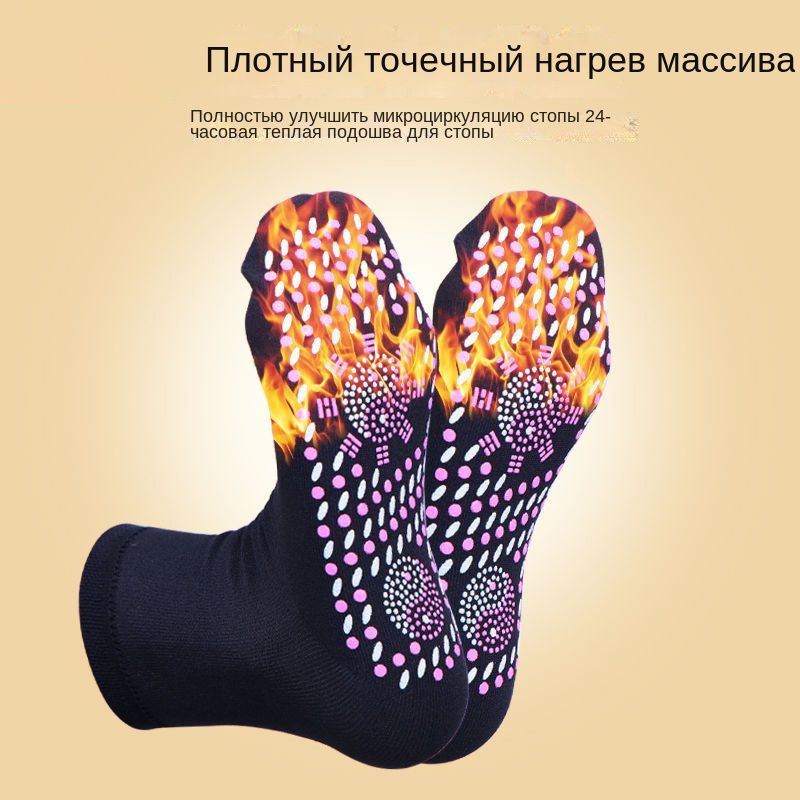
Blood Blisters and Petechiae: Understanding Vascular Causes
Blood blisters and petechiae are two vascular-related causes of dark spots on feet. Blood blisters form when blood vessels near the surface of the skin rupture, usually due to pinching or crushing injuries. They appear as raised, dark red or purple spots filled with blood.
Petechiae, on the other hand, are tiny, round, brown-purple spots that appear when small blood vessels break beneath the skin. They’re often caused by:
- Prolonged standing or sitting
- Straining during physical activities
- Certain medications
- Underlying medical conditions affecting blood clotting
How long do these vascular spots typically last? Blood blisters usually heal within 1-2 weeks, while petechiae often fade within days. If these spots persist or appear frequently without apparent cause, consult a healthcare provider to rule out underlying conditions.
Hyperpigmentation and Sun Damage on Feet
Hyperpigmentation, an excess production of melanin, can cause dark spots on various parts of the body, including the feet. Sun exposure is a primary cause of hyperpigmentation, even on feet. Despite being less exposed than other body parts, feet can still suffer sun damage, especially during barefoot activities or when wearing open shoes.

Can hyperpigmentation on feet be prevented or treated? Yes, several strategies can help:
- Apply sunscreen to exposed areas of feet, including the tops and sides
- Wear protective footwear when outdoors
- Use topical treatments containing ingredients like hydroquinone, kojic acid, or vitamin C
- Consider professional treatments like chemical peels or laser therapy for stubborn spots
Remember, consistent sun protection is key to preventing further hyperpigmentation and reducing the risk of skin cancer on your feet.
Traumatic Tattoos: When Injuries Leave Their Mark
Traumatic tattoos occur when foreign particles become embedded in the skin following an injury. On the feet, this can happen from stepping on objects like asphalt, gravel, or pencil lead. The resulting dark spot may resemble a typical tattoo or appear as scattered dark specks.
Do traumatic tattoos on feet require treatment? In many cases, these marks fade over time as the body gradually eliminates the foreign particles. However, persistent or bothersome traumatic tattoos can be treated through various methods:
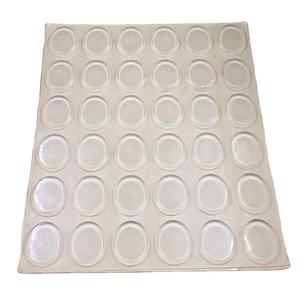
- Surgical excision
- Dermabrasion
- Laser removal
If you’re concerned about a potential traumatic tattoo on your foot, consult a dermatologist to discuss appropriate treatment options.
When to Seek Medical Attention for Black Dots on Feet
While many dark spots on feet are harmless, certain situations warrant professional medical evaluation. Seek medical attention if you notice:
- Rapid growth or changes in existing spots
- Spots that bleed, itch, or cause pain
- Asymmetrical or irregularly shaped spots
- Spots larger than 6mm in diameter
- Multiple colors within a single spot
- New spots appearing in adulthood, especially after age 50
How quickly should you see a doctor for concerning foot spots? If you notice any of these signs, schedule an appointment with a dermatologist within a few weeks. For spots that are changing rapidly or causing significant discomfort, seek evaluation sooner.
Diagnostic Procedures for Dark Spots on Feet
When you visit a healthcare provider for dark spots on your feet, they may perform several diagnostic procedures to determine the cause:
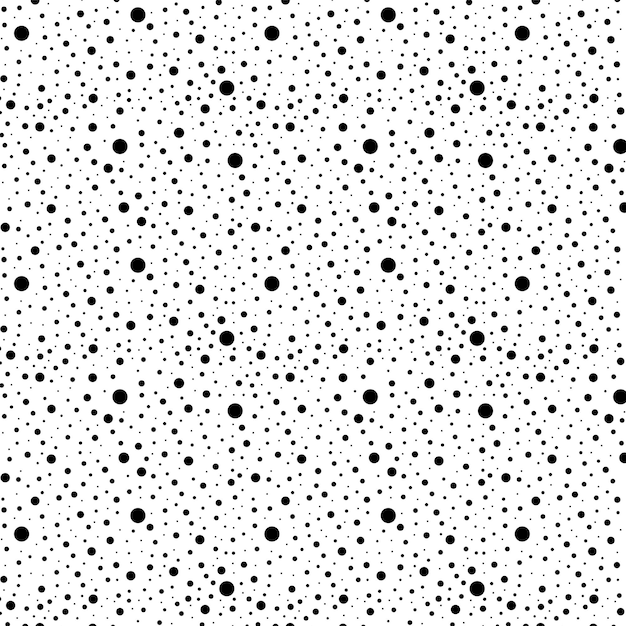
- Visual examination: The doctor will closely inspect the spot, often using a dermatoscope for magnification.
- Skin biopsy: A small sample of the spot may be removed for laboratory analysis.
- Wood’s lamp examination: This special UV light can help identify certain fungal infections or pigment disorders.
- Dermoscopy: A non-invasive technique using a handheld device to visualize structures beneath the skin’s surface.
These procedures help differentiate between benign conditions and potentially serious issues like melanoma, ensuring appropriate treatment.
Treatment Options for Various Causes of Foot Spots
The treatment for dark spots on feet depends on their underlying cause. Here’s an overview of common treatments for various conditions:
Plantar Warts
- Over-the-counter salicylic acid treatments
- Cryotherapy (freezing)
- Prescription medications
- Laser therapy
Blood Blisters and Petechiae
- Usually resolve on their own
- Protect the area from further injury
- Avoid popping blood blisters
Hyperpigmentation
- Topical lightening agents
- Chemical peels
- Laser treatments
- Consistent sun protection
Melanoma
- Surgical excision
- Lymph node biopsy
- Immunotherapy
- Targeted therapy
- Radiation therapy
What’s the most effective way to prevent complications from foot spots? Regular self-examinations and prompt medical evaluation of concerning changes are key to early detection and successful treatment of potentially serious conditions.

Maintaining Healthy Feet: Prevention and Care
Preventing and managing dark spots on feet involves a combination of good hygiene, protection, and regular monitoring. Here are some tips for maintaining healthy feet:
- Inspect your feet regularly, including the soles and between toes
- Keep feet clean and dry to prevent fungal infections
- Wear properly fitting shoes to avoid blisters and injuries
- Apply sunscreen to exposed areas of feet when outdoors
- Avoid walking barefoot in public areas to reduce the risk of plantar warts
- Manage underlying health conditions that may affect foot health
- Moisturize feet to prevent dry, cracked skin
How often should you perform a thorough foot self-examination? Aim for a monthly check, paying close attention to any new or changing spots. This routine can help catch potential issues early and maintain overall foot health.
The Role of Podiatrists and Dermatologists
Both podiatrists and dermatologists play important roles in foot health and the management of dark spots on feet. Here’s how these specialists can help:

Podiatrists
- Specialize in foot and ankle health
- Can diagnose and treat various foot conditions
- Provide preventive care and education
- May perform minor surgical procedures
Dermatologists
- Experts in skin health, including skin on feet
- Specialized in diagnosing and treating skin cancers
- Can perform advanced treatments for pigmentation issues
- Offer comprehensive skin examinations
When should you see a podiatrist vs. a dermatologist for foot spots? For general foot health and non-skin-specific issues, a podiatrist is a good starting point. For concerns specifically related to the skin on your feet, especially potential skin cancers or persistent pigmentation issues, a dermatologist may be more appropriate.
In conclusion, while dark spots on feet can be alarming, most are benign and manageable. Regular self-examinations, proper foot care, and timely medical evaluation when needed are key to maintaining healthy feet and catching any potential issues early. Remember, your feet carry you through life – treat them with the care and attention they deserve.
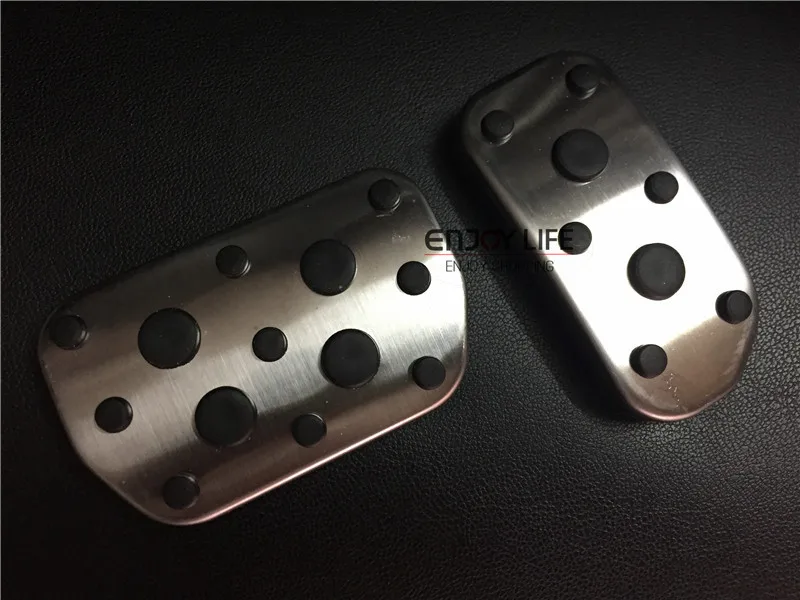
Signs that could be melanoma on your foot
Diseases & conditions
-
Coronavirus Resource Center
-
Acne
-
Eczema
-
Hair loss
-
Psoriasis
-
Rosacea
-
Skin cancer
-
A to Z diseases
-
A to Z videos
- DIY acne treatment
- How dermatologists treat
- Skin care: Acne-prone skin
- Causes
- Is it really acne?
- Types & treatments
- Childhood eczema
- Adult eczema
- Insider secrets
- Types of hair loss
- Treatment for hair loss
- Causes of hair loss
- Hair care matters
- Insider secrets
- What is psoriasis
- Diagnosis & treatment
- Skin, hair & nail care
- Triggers
- Insider secrets
- What is rosacea
- Treatment
- Skin care & triggers
- Insider secrets
- Types and treatment
- Find skin cancer
- Prevent skin cancer
- Raise awareness
- Español
Featured
How Natalie cleared her adult acne
Natalie tried many acne products without success. Find out how a board-certified dermatologist helped Natalie see clear skin before her wedding.
Find out how a board-certified dermatologist helped Natalie see clear skin before her wedding.
JAK inhibitors: A newer type of medication
JAK inhibitors are helping patients with alopecia areata, eczema/atopic dermatitis, psoriasis, and vitiligo. Here’s what you need to know.
Everyday care
-
Skin care basics
-
Skin care secrets
-
Injured skin
-
Itchy skin
-
Sun protection
-
Hair & scalp care
-
Nail care secrets
- Basic skin care
- Dry, oily skin
- Hair removal
- Tattoos and piercings
- Anti-aging skin care
- For your face
- For your skin routine
- Preventing skin problems
- Bites & stings
- Burns, cuts, & other wounds
- Itch relief
- Poison ivy, oak & sumac
- Rashes
- Shade, clothing, and sunscreen
- Sun damage and your skin
- Aprenda a proteger su piel del sol
- Your hair
- Your scalp
- Nail care basics
- Manicures & pedicures
Featured
Practice Safe Sun
Everyone’s at risk for skin cancer.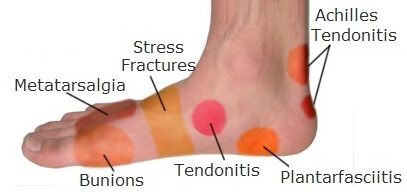 These dermatologists’ tips tell you how to protect your skin.
These dermatologists’ tips tell you how to protect your skin.
Relieve uncontrollably itchy skin
Find out what may be causing the itch and what can bring relief.
Darker Skin Tones
-
Skin care secrets
-
Hair care
-
Hair loss
-
Diseases & Conditions
- Acne
- Dark spots
- Dry skin
- Light spots
- Razor bumps
- Caring for Black hair
- Scalp psoriasis
- Weaves & extensions
- Central centrifugal cicatricial alopecia
- Frontal fibrosing alopecia
- Hairstyles that pull can cause hair loss
- Acanthosis nigricans
- Acne keloidalis nuchae
- Hidradenitis suppurativa
- Keloid scars
- Lupus and your skin
- Sarcoidosis and your skin
- Skin cancer
- Vitiligo
- More diseases & conditions
Featured
Fade dark spots
Find out why dark spots appear and what can fade them.
Untreatable razor bumps or acne?
If you have what feels like razor bumps or acne on the back of your neck or scalp, you may have acne keloidalis nuchae. Find out what can help.
Cosmetic treatments
-
Your safety
-
Age spots & dark marks
-
Cellulite & fat removal
-
Hair removal
-
Scars & stretch marks
-
Wrinkles
-
Younger-looking skin
Featured
Laser hair removal
You can expect permanent results in all but one area. Do you know which one?
Do you know which one?
Scar treatment
If you want to diminish a noticeable scar, know these 10 things before having laser treatment.
Botox
It can smooth out deep wrinkles and lines, but the results aren’t permanent. Here’s how long botox tends to last.
Public health programs
-
Skin cancer awareness
-
Free skin cancer screenings
-
Kids’ camp
-
Good Skin Knowledge
-
Shade Structure grants
-
Skin Cancer, Take a Hike!™
-
Awareness campaigns
-
Flyers & posters
-
Get involved
- Lesson plans and activities
- Community grants
Featured
Free materials to help raise skin cancer awareness
Use these professionally produced online infographics, posters, and videos to help others find and prevent skin cancer.
Dermatologist-approved lesson plans, activities you can use
Free to everyone, these materials teach young people about common skin conditions, which can prevent misunderstanding and bullying.
Find a dermatologist
-
Find a dermatologist
-
What is a dermatologist?
-
FAAD: What it means
-
How to select a dermatologist
-
Telemedicine appointments
-
Prior authorization
-
Dermatologists team up to improve patient care
Featured
Find a Dermatologist
You can search by location, condition, and procedure to find the dermatologist that’s right for you.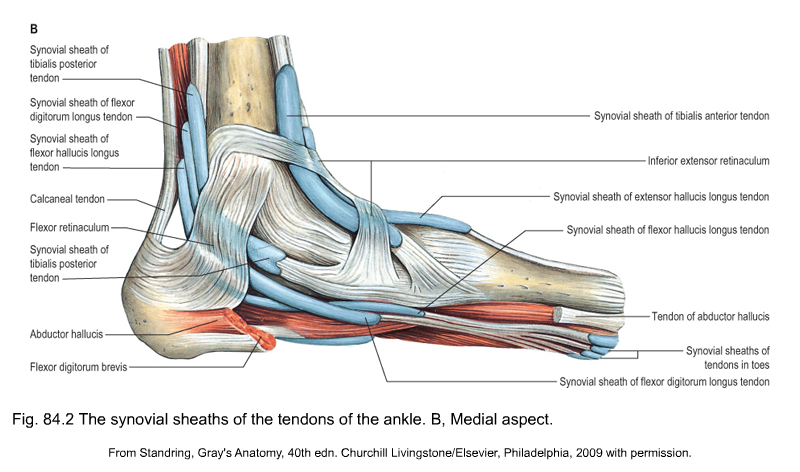
What is a dermatologist?
A dermatologist is a medical doctor who specializes in treating the skin, hair, and nails. Dermatologists care for people of all ages.
Tinea nigra: Diagnosis, treatment, and remedies
Tinea nigra is a very rare fungal infection. It causes brown or black patches to develop on the soles of the feet, the palms of the hand, or, on rare occasions, the torso.
A type of yeast called Hortaea werneckii causes most tinea nigra infections. A person can get the infection when the yeast gets into their body, often through a small wound.
Keep reading to learn more about a tinea nigra infection, including the symptoms, diagnosis, and treatment options.
Tinea nigra causes brown or black patches to appear on the soles of the feet or the palms of the hand. The patches may be so small and faint that a person does not notice them.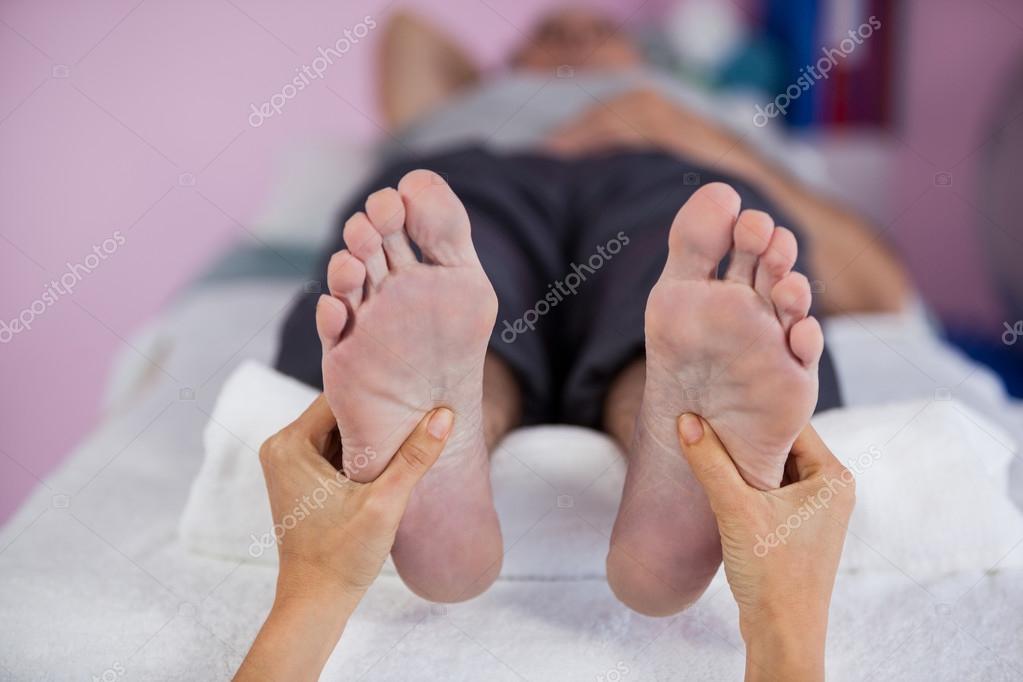 They also tend to grow slowly. The most common symptoms include:
They also tend to grow slowly. The most common symptoms include:
- a patch on the foot or hand following an injury
- a single round, linear, or irregularly shaped patch that grows slowly
- growing patches that either cause no symptoms or itch
- patches that resemble a growing mole or freckle
- a slow growing brown patch on the torso
The infection affects people who live in tropical regions and those who have recently traveled to these areas.
Most people with tinea nigra have just one lesion. However, if the fungus comes into contact with multiple points of entry, such as wounds on both hands, a person may have several patches.
In healthy people, tinea nigra lives only on the superficial layers of the skin. It does not spread, cause serious infections, or present major health risks. It is more likely to affect young people under the age of 20 years.
Tinea nigra is a fungal infection, which means that a person gets it when they come into contact with a fungus that can cause the infection.
Scientists used to call Hortaea werneckii either Cladosporium werneckii, Exophiala werneckii, or Phaeoannellomyces werneckii. Another yeast called Stenella araguata may cause some cases of tinea nigra.
As with many other fungi, Hortaea werneckii thrives in moist or humid environments. It lives on dead and decaying organic material, such as soil and wood. It can get into the human body when it comes into contact with the skin, usually through a wound. It is most likely to live on parts of the body with many sweat glands, such as the hands and feet.
Certain risk factors increase a person’s likelihood of developing this infection. They include:
- living in a tropical or subtropical region
- recent travel to a subtropical or tropical region
- a history of hyperhidrosis, a condition that causes excessive sweating
- a recent injury
- contact with wood, soil, or compost, such as from gardening without gloves or woodworking in a tropical or subtropical region
In many cases, a person’s symptoms may lead a doctor to suspect tinea nigra. However, as tinea nigra can resemble the symptoms of several other conditions, it is important to get an accurate diagnosis.
However, as tinea nigra can resemble the symptoms of several other conditions, it is important to get an accurate diagnosis.
The doctor may ask the individual about their recent travel, injury history, and exposure to wood, compost, or soil. They will also usually take a culture of the skin and send it to a lab to see whether Hortaea werneckii grows within a week. If it does, this means that the test is positive for tinea nigra.
Sometimes, a doctor may also perform a skin biopsy to test for skin cancer, as certain types of skin cancer can look similar to tinea nigra.
People who wish to try home remedies may see improvements with keratolytic agents. A keratolytic is a chemical that helps remove excess skin. Some potentially effective keratolytics include:
- wart cream
- salicylic acid
- Whitfield’s ointment
These drugs may not be safe during pregnancy, so women who are pregnant or trying to become pregnant should see a doctor instead of trying home remedies.
If home treatment fails, it is best to see a doctor. There are other possible causes of brown lesions on the skin.
Doctors usually prescribe topical antifungal creams to treat tinea nigra. People should apply the cream directly to the patch exactly as a doctor advises.
In some cases, a person may also need to take oral antifungal drugs, especially if the lesions are very large or if antifungal creams have not worked. However, oral drugs may not be effective.
Doctors do not know what treatment duration is optimal, but the authors of one report suggest that 1 month of treatment is sufficient.
People can reduce the risk of tinea nigra infections by protecting the skin from exposure to soil, compost, and other materials in which the Hortaea werneckii fungus likes to grow. Following this advice is especially important for people who travel to or live in tropical regions.
These strategies can help:
- practicing frequent handwashing, especially after spending time outside
- wearing gloves or other protective gear in the garden
- refraining from walking outside with bare feet
- wearing socks or shoes in public places
- changing socks frequently, especially if they get wet
- covering any wounds on the hands or feet before spending time outside
Several other skin conditions may look similar to tinea nigra. Other fungal infections, such as athlete’s foot, may also cause skin lesions, but they are not usually brown.
Other fungal infections, such as athlete’s foot, may also cause skin lesions, but they are not usually brown.
Melanoma, a type of skin cancer, can be deadly. It may also look very similar to tinea nigra in the early stages. Similarly to tinea nigra, melanoma is not typically painful at first. Therefore, people who do not get relief from home or medical treatment should see a dermatologist and request a biopsy.
Some other medical conditions and factors that may cause brown patches include:
- skin staining from henna
- skin hyperpigmentation from pregnancy or Addison’s disease
- complications of syphilis
- exposure to certain chemicals, such as silver nitrate
Tinea nigra is not a serious medical condition. Most people do not notice any symptoms other than brown spots on the skin.
However, as tinea nigra looks similar to several other conditions, it is important to see a doctor for an accurate diagnosis.
Prompt treatment can prevent serious skin-related conditions from getting worse.
ᐉ Black dots on the foot – CLICK HERE
Why did a black dot appear on the sole of the foot, which hurts and causes significant discomfort when walking? Most likely we are talking about a fairly common dermatological disease – a plantar wart.
Contents:
- Black dots on the feet: what is it?
- Infection conditions
- How do black spots appear on the foot?
- How to treat black spots on the foot?
- Ways to remove warts
- Removal of black spots on the foot with folk remedies
Why does this benign neoplasm appear on the feet? We offer you to learn more about how to deal with painful black dots on the feet and how to avoid their appearance?
Black dots on the feet: what is it?
Back to content
Like other types of skin lesions, plantar warts are viral in nature. Caused by the human papillomavirus (HPV), plantar warts, more often than other varieties, have clearly visible black dots on the surface or in the depth of the formation, which are formed due to capillary thrombosis.
It is the warts on the foot that can cause maximum discomfort, causing significant pain when walking.
There is another, much more important difference from other varieties.
Conditions of infection
Back to contents
There are two ways to become infected with HPV: both directly from the carrier of the virus, and through objects with which he has come into contact.
At the same time, the insidious pathogen shows resistance to high and low temperatures, and, once in the body, may not manifest itself in any way for up to six months.
But for the transition to an active state, papillomavirus requires the presence of at least one of the following factors:
- increased sweating of the feet and loosening of the epidermis;
- excessively dry skin on soles;
- wearing uncomfortable or tight shoes;
- flat feet, osteoarthritis, arthritis;
- systemic diseases affecting tissue nutrition;
- decrease in the protective functions of the skin on the background of HIV, chemotherapy, etc.
 ;
; - mechanical injuries of the epidermis.
To reduce the risk of HPV infection, bathers are advised to use personal items and thoroughly wash and dry shoes used in the bath.
And most importantly, be as careful as possible when choosing a sauna for regular visits.
To choose a sauna or bath with an impeccable reputation in your city, be sure to check out the website vsebani.com.ua.
How do black dots appear on the foot?
Back to contents
Activation of virus multiplication, which occurs when general or local immunity is weakened, accelerates the process of keratinization of dermal cells.
At the initial stage, the wart is not yet visible, but the affected area already feels sore, and a slight induration can be detected on palpation.
The formation, growing in all directions, forms a noticeable dense tubercle, which hurts, because it gradually causes compression of adjacent tissues.
Capillaries entering the affected area are destroyed, forming small hemorrhages.
One “mother” tumor can cause infection of neighboring areas, which leads to the appearance of plaques formed by a group of warts. In this case, we are talking about high activity of the virus.
How to treat black spots on the foot?
Back to content
We are in a hurry to please you!
Approximately one third of plantar warts go away without any treatment.
And black dots, along with other elements of the neoplasm, are simply exfoliated in the process of natural renewal of the epidermis.
However, waiting for this to happen is not the best solution, as having a plantar wart is always a source of considerable discomfort. How to remove warts?
It is the black dot under the external growth that confirms the diagnosis.
There are several proven methods for removing black spots on the foot.
| Method | Features |
| Electrocoagulation | warts |
| Cryosurgery | Optimal for young growths (up to six months) |
| Use of a laser | Removes even deep formations while closing the vessels |
| Surgical removal | Used to remove large lesions |
warts will help you quickly return to pleasure – take a steam bath in the sauna. And the site vsebani.com.ua will help you to choose a bath, the services of which you can fully trust.
youtube.com/embed/q6KIvoH_5T0?rel=0″>
Removal of black dots on the foot with folk remedies
Back to content
If it is not yet possible to visit a specialist, it is worth trying affordable and safe folk methods.
Many wart removers can be found literally underfoot, among the abundant weeds growing every year.
This can be dandelion or celandine juice, wormwood tincture, or the use of more exotic combinations based on grape or apple cider vinegar.
Usually, the affected area, which hurts and causes discomfort, is simply smeared with fresh plant juice or compresses are made at night, which should be fixed on the feet with a bandage or plaster.
The main disadvantage of such procedures is the duration of the course of treatment, which can last from two to four weeks.
However, the most effective means for removing warts with black dots are various aromatic oils in combination with a cosmetic base oil.
Many of them have a pronounced antiviral, antibacterial and anti-inflammatory, as well as immunomodulatory effects.
For example, a mixture consisting of 10 ml of jojoba oil, to which a few drops of lemon, tea tree, eucalyptus and cloves aroma oils are added, received excellent reviews.
The procedure for removing black spots on the feet is as follows:
- Wash your hands thoroughly.
- Disinfect the skin area with alcohol.
- Spot treat the area with essential oil.
The exposure time must not exceed 20 seconds.
Avoid applying essential oils or their mixture to healthy skin to prevent chemical burns. But a slight burning sensation and tingling or burning sensation is considered the norm.
Take care of yourself and be healthy!
Back to content
ᐈ Why do warts appear? ~【Types, treatments】
A wart is a benign neoplasm caused by infection with the human papillomavirus. Pathology manifests itself in the form of nodules or seals protruding above the surface of the skin. In most cases, warts are round in shape, prone to spread, can grow and change shape, become painful and bleed when mechanically damaged. If neoplasms are not properly treated, they can leave scars on the skin or degenerate into malignant tumors. Warts can appear at any age, but are more common in children.
Pathology manifests itself in the form of nodules or seals protruding above the surface of the skin. In most cases, warts are round in shape, prone to spread, can grow and change shape, become painful and bleed when mechanically damaged. If neoplasms are not properly treated, they can leave scars on the skin or degenerate into malignant tumors. Warts can appear at any age, but are more common in children.
Vidkriti
Zgornuti
Classification of warts
The appearance and location of warts usually depends on the type of HPV that led to the appearance of skin lesions. Based on this, the following types of warts are distinguished:
Ordinary (simple, vulgar).
Detected in about 70% of cases. They are more often localized on the back of the hands, fingers and palms, but can occur on any part of the body, especially prone to frequent trauma. Sometimes they appear on the mucous membranes. Most cases are caused by infection with HPV type 27.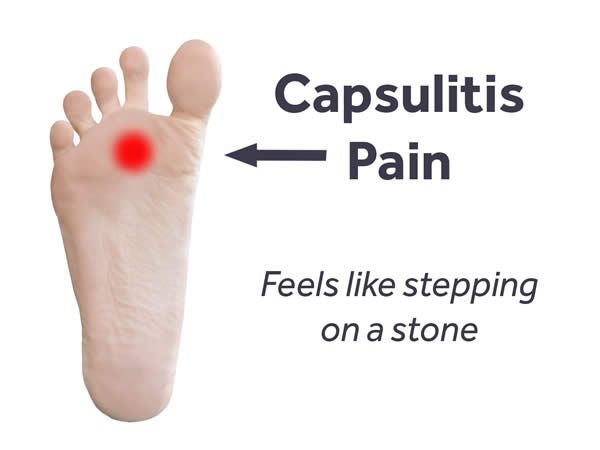
Flat (or youthful).
Found in 4% of patients with this pathology. Usually appear on the skin and more often – on the face, hands or along scratches. They can affect the mucous membranes (including the rectum), the glans penis, and the cervix. Most often occur between the ages of 10-25 years. Their appearance is usually caused by HPV types 10, 28 or 49, but is sometimes provoked by other strains of it (26–29 or 41 types).
Palmar-plantar.
Detected in 34% of cases. Occur on the surface of the palms or soles when infected with 1-4 types of papillomavirus. More common in young or older people. When several elements merge at once, they form mosaic warts.
Periungual.
They belong to the common variety, but are always located near the nail plates. In most cases, they arise from the habit of biting the nails or the skin around them.
Filiform warts.
They are found on the skin of the neck, eyelids, armpits, inguinal folds.:max_bytes(150000):strip_icc()/FootProblemswithRheumatoidArthritis_Final_2-459a5559f5634de9abd6926f8e1d69a6.png) They appear more often in older people.
They appear more often in older people.
Genital warts.
They are detected more often in sexually active people, in children they occur when infected from the mother. Localized on the genitals, in the groin, perianal zone, sometimes in the urethra. Children may have nasolabial folds. Caused by HPV types (6 and 11, sometimes 13, 16, 18, 31, 33, 35), which are especially dangerous in terms of developing cancer of the female and male genital organs.
All types of warts may be single or multiple. More often they are present in the plural form.
Vidkriti
Zgornuti
What is the difference between a wart and a papilloma?
These growths are caused by HPV, but have some differences. Warts are more often pedunculated, have sharper edges and, in most cases, a rough surface. Papillomas always have a stalk, the surface is bumpy, the edges are torn. In some cases, only PCR analysis to determine the DNA of the virus or a biopsy helps to distinguish these two neoplasms.
Etiology of warts and routes of infection
Causes of warts are always associated with infection of the skin or mucous membranes with the human papillomavirus. More than 100 types of this virus are known, and some of them are oncogenic. That is why HPV DNA typing is sometimes necessary to identify the causes of warts.
To understand why warts appear, a description of the HPV infection pathways will help. Infection is caused by contact with a sick person or animal. Pathology can be provoked by direct contact or through objects of common use: toys, clothes, shoes, etc. Some types of HPV are transmitted sexually, during childbirth from a sick mother to a child or vertically from a pregnant woman to a fetus. After infection, self-infection (autoinoculation) can also occur, which occurs during scratching, nail biting, shaving, peeling, or other procedures associated with microdamage to the skin.
Vidkriti
Zgornuti
HPV enters the body through damage to the skin and mucous membranes. Various factors can contribute to infection:
Various factors can contribute to infection:
- frequent skin trauma;
- visits to saunas, swimming pools and gyms;
- immunosuppression: especially in HIV or after organ transplant;
- dermatological pathologies: atopic dermatitis, eczema, etc.;
- work in factories for cutting meat and fish;
- wearing uncomfortable and breathable shoes.
Vidkriti
Zgornuti
The incubation period after HPV infection is 1.5–5 months. In some cases, the appearance of warts may occur later. Usually, the trigger for their occurrence is stress, a decrease in immunity against the background of hormonal imbalance, acute or chronic diseases.
Clinical manifestations of warts
To understand what a wart is, a description of its external manifestations will help. The symptoms of warts are varied and depend on their variety.
Common (simple, vulgar) warts
Signs of warts and their location may vary. Usually they are multiple and look like rounded dense nodules with clear boundaries. Their size can vary from 2 to 10 mm. In some cases they merge. The surface of simple warts is usually rough. Coloring can match the natural skin tone or have a yellowish, light gray, brownish and pinkish tint.
Usually they are multiple and look like rounded dense nodules with clear boundaries. Their size can vary from 2 to 10 mm. In some cases they merge. The surface of simple warts is usually rough. Coloring can match the natural skin tone or have a yellowish, light gray, brownish and pinkish tint.
Among several simple warts, one usually stands out in a larger size. It is often called the “mother” because after its removal, the rest may disappear on their own.
Simple warts are not painful. However, when placed in areas that are prone to injury, they may cause moderate pain or discomfort.
Flat (or juvenile) warts
This variety of warts looks like small spots that rise slightly above the surface of the skin. The formations have a solid or brownish color.
Flat warts usually appear on a specific area of the skin. In the place of accumulation, there can be from several to 200 formations. They do not cause pain and are usually perceived as a cosmetic defect.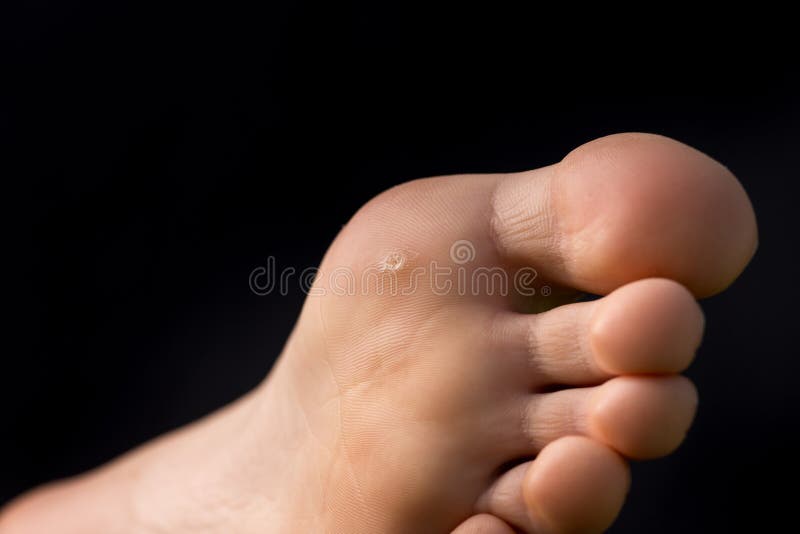
Palmar-plantar warts
The appearance of these warts is very similar to dense corns. They look like a patch of keratinized skin on the feet or palms. There is usually a dark dot in the center.
Particularly dense warts can cause pain when walking, standing in one place or tightly gripping an object with a hand. Sometimes patients compare it with “a nail in a boot”. Pain occurs because the wart grows inwards and, when pressed, presses on the nerve endings.
At first, the patient may have only one lump. Over time, child warts appear near it, which merge and form foci of mosaic hyperkeratosis.
Periungual warts
This type of common wart is distinguished by its location and smaller size. Formations are more often located near the nail plates, but in some cases they are localized under the nail. As they grow, they cause discomfort and pain. May cause deformation of the nail plate.
Filiform warts
These warts can occur anywhere on the body and tend to spread (especially if injured).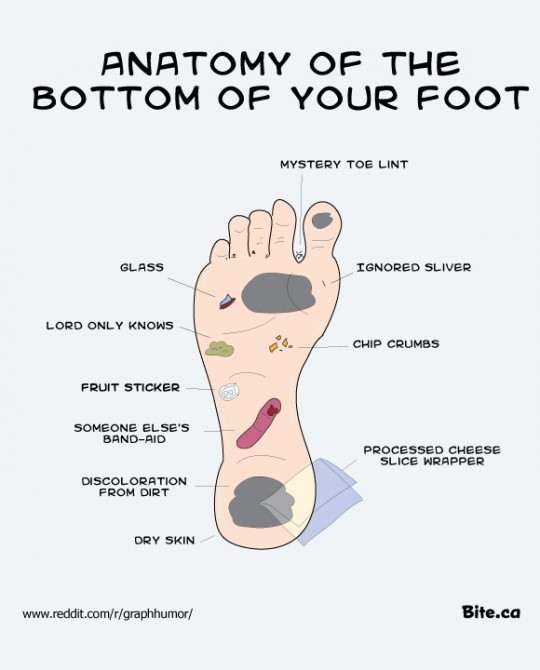 They have an elongated shape and resemble fern growths. Sometimes the growths itch. The size of one formation rarely exceeds 5 mm. The color of filiform warts can vary from flesh to brown.
They have an elongated shape and resemble fern growths. Sometimes the growths itch. The size of one formation rarely exceeds 5 mm. The color of filiform warts can vary from flesh to brown.
Genital warts (genital warts)
These growths look like a bump or group of bumps in the genital area. Genital warts can be large or small, with a smooth or cauliflower or cockscomb surface.
The color of genital warts is flesh or pink. They are prone to spilling. When mechanically damaged, they turn red and bleed. Usually genital warts do not cause discomfort, but in some patients their presence is accompanied by itching and burning.
In women, genital warts are more common on the skin of the perineum, vulva, vaginal walls, or cervix. In men – under the foreskin, on the coronal sulcus or shaft of the penis, in the area of the urethra. The practice of anal sex increases the likelihood of genital warts around the anus and in the rectum. During oral sex or during the passage of a child through the birth canal of an infected mother, the nasopharynx may be affected.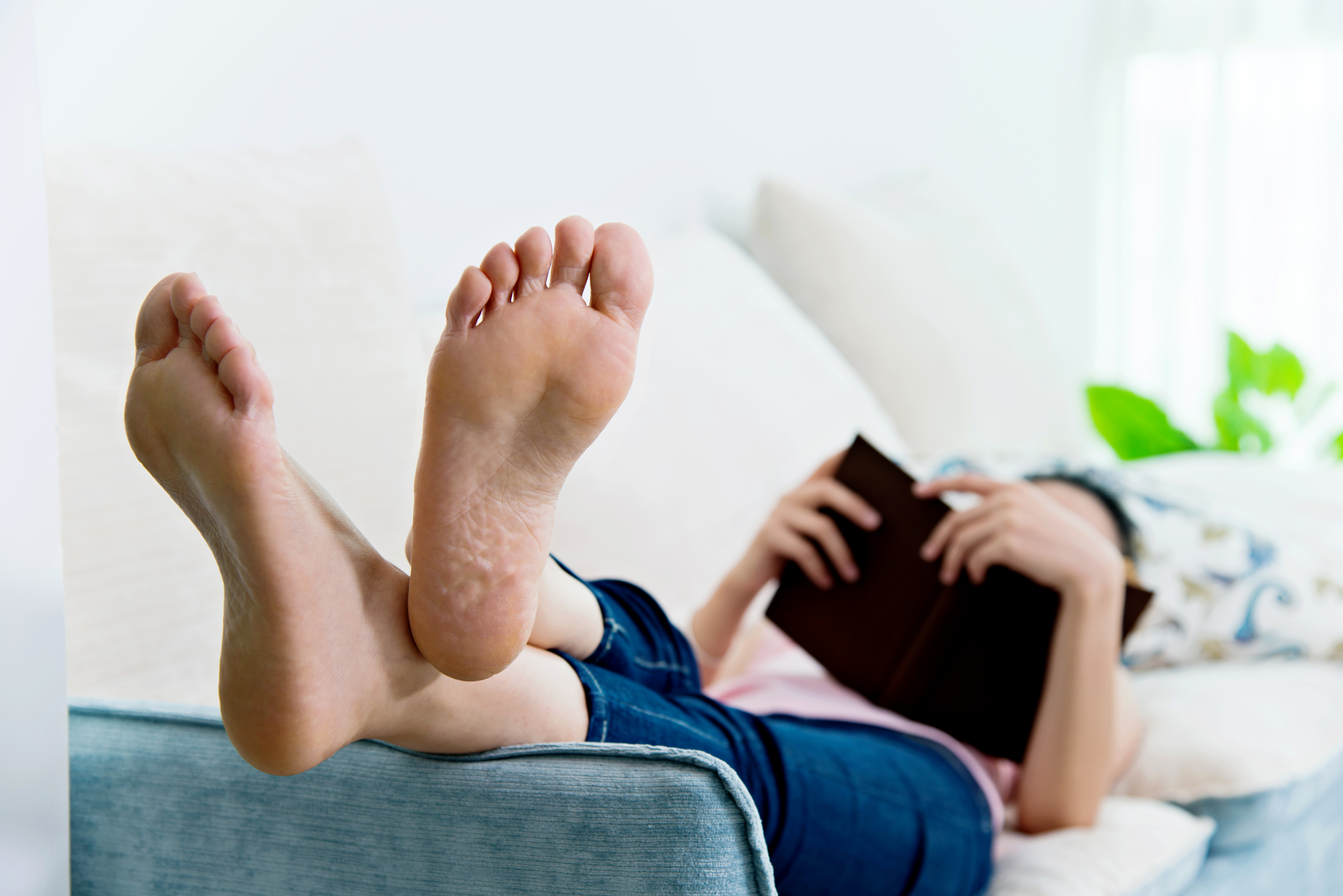
Buschke-Levenshtein giant condyloma is a type of genital warts. It looks like a large conglomerate of genital warts, which grows rapidly, becomes covered with keratinized cells and macerates. Discharge with an unpleasant odor accumulates in its grooves. In some cases, the rapid growth of condyloma causes the destruction of the tissues of the genital organs and the formation of ulcers and fistulas. This type of genital warts is prone to frequent relapses. With malignancy, which occurs after 2–12 years, squamous cell carcinoma of the skin or external genitalia develops.
Vidkriti
Zgornuti
Features of warts in children
According to statistics, warts are found in approximately 10% of children. True indicators are difficult to identify, since in some cases these formations spontaneously regress or are eliminated by self-treatment. The peak incidence occurs in the age group of 12–17 years. In children, more common, flat, periungual or palmar-plantar warts are more often detected, less often – genital warts.
Genital warts can be found in up to 30% of newborns born to mothers infected with certain types of HPV. Also, the risk of infection with genital forms of warts increases with the onset of sexual activity in adolescence.
Vidkriti
Zgornuti
Complications of warts
All varieties of warts are perceived as a cosmetic defect and can cause strong psycho-emotional experiences. Neoplasms on the face or other parts of the body that are not hidden under clothing are especially difficult to perceive.
Mechanical damage and infection of warts can lead to pain, bleeding and suppuration. If warts are removed incorrectly, visible scars can form.
The most dangerous consequence of warts caused by HPV is the risk of their transformation into a malignant tumor. The most oncogenic are 31, 33, 35, 45, 16, 18, 11 and 6 strains of papillomavirus. They are transmitted through vaginal, oral or anal sex. In an unfavorable course, the infection leads to the development of cancer of the cervix, vagina, vulva in women and men, rectum and oropharynx.
Vidkriti
Zgornuti
Diagnosis of warts
If warts appear, consult a dermatologist. An examination and dermatoscopy are usually sufficient to make a diagnosis. In some difficult cases, the patient is recommended to conduct a PCR analysis to determine the type of HPV by DNA, including the Digene test – scraping from the vaginal mucosa or urethra.
To exclude malignancy of the neoplasm, a biopsy may be prescribed, followed by a histological analysis and consultation with an oncologist. With genital warts, a consultation with a gynecologist, urologist or proctologist is prescribed. The scope of the examination always depends on the clinical case.
To exclude errors, differential diagnosis of warts with papillomas, fibromas, skin horn, warty tuberculosis, seborrheic keratosis, lichen planus, squamous cell skin cancer is carried out.
Vidkriti
Zgornuti
Treatment of warts
An analysis of all the features of a clinical case helps the doctor understand how to get rid of warts as effectively as possible.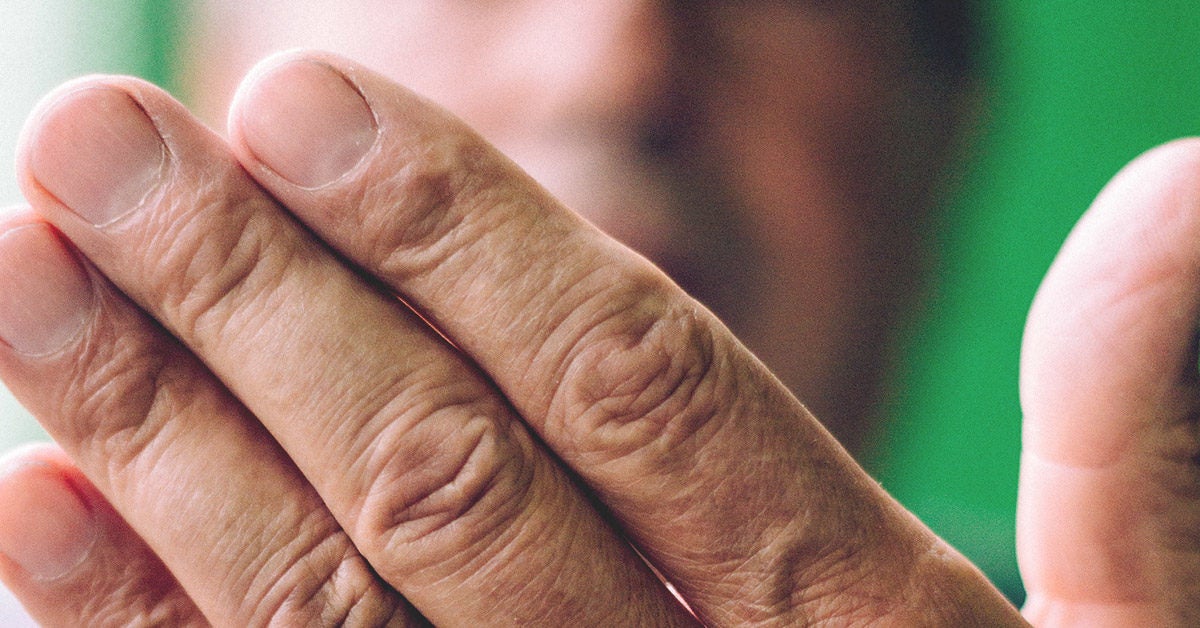 It is recommended that all patients wear comfortable clothing (or shoes) and prevent injury to affected skin areas until the completion of treatment.
It is recommended that all patients wear comfortable clothing (or shoes) and prevent injury to affected skin areas until the completion of treatment.
Warts can be treated with conservative, surgical and combined methods. For local elimination of neoplasms, external irritants are used, which are applied according to certain patterns and have a cauterizing effect. As an addition to them, antiviral ointments are used. Also, to increase immunity and increase the effectiveness of the treatment of warts, the patient can be prescribed multivitamin complexes, immunomodulators and adaptogens.
Traditional medicine methods for warts are extremely rarely effective. In addition, they are often unsafe and lead to an even greater spread of HPV manifestations or the appearance of scars and scars.
If topical therapy is ineffective or inappropriate, the patient is advised to consult a surgeon to select a surgical technique to eliminate warts.
Vidkriti
Zgornuti
Methods for removing warts
Various minimally invasive and classical surgical methods can be used to remove warts:
- cryodestruction;
- electrocoagulation;
- scalpel excision;
- laser removal;
- radio wave surgery.

Vidkriti
Zgornuti
The choice of technique is always individual. For example, for the face, those methods are more often used that are minimally dangerous in terms of the appearance of scars and pigmentation.
Surgical treatment is complemented by topical therapy. To prevent relapse, the patient may be prescribed immunomodulators and antiviral agents.
Prevention of warts
To prevent the appearance of warts it is necessary to:
- prevent skin trauma;
- even with minor injuries, use an antiseptic and cover the wound surface with a bandage or plaster;
- observe the rules of personal hygiene;
- when visiting baths, saunas or swimming pools, wear individual rubber shoes;
- use only sterile or individual instruments for manicure and pedicure;
- strengthen immunity.
Vaccination
To prevent the dangerous consequences of human papillomavirus infection, which also includes warts, WHO recommends mandatory HPV vaccination for all girls from 9 to 14 years of age. The expediency of their use for boys and men, people 14–25, 25–45 years and older is discussed with the doctor.
The expediency of their use for boys and men, people 14–25, 25–45 years and older is discussed with the doctor.
To prevent infection with oncogenic types of HPV, vaccines are used, the choice of which is determined by the clinical case.
Tips and tricks
Beware of dangerous myths and misconceptions:
- Warts go away on their own and do not reappear: even if the wart has disappeared, there is no guarantee that it will not reappear.
- A wart can be eliminated with folk remedies: it is far from always possible to eliminate an ugly growth, and such methods do not get rid of HPV and scars.
- After the removal of warts, scars always remain: the use of modern techniques helps to eliminate warts without scars and pigmentation.
Vidkriti
Zgornuti
Q&A
Can a wart be torn off?
The wart has a complex structure. It distinguishes not only the outer part that rises above the skin, but also the root, which often goes into the deep layers of the skin.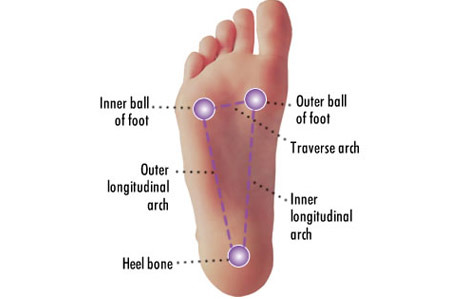 If the wart comes off, then its root remains in the skin, which can subsequently give rise to new warts, infection, inflammation and a more serious infectious process are possible. At a consultation with a dermatologist, you can find out what are the causes of warts and how to get rid of them forever.
If the wart comes off, then its root remains in the skin, which can subsequently give rise to new warts, infection, inflammation and a more serious infectious process are possible. At a consultation with a dermatologist, you can find out what are the causes of warts and how to get rid of them forever.
What is the best way to remove a wart from a child?
Warts in children most often appear as oval or round growths on the skin. You should not try to get rid of this formation yourself, unskilled actions can lead to inflammation and unexpected complications. At a consultation with a pediatric dermatologist, you can learn how to remove a wart in an acceptable and comfortable way for a child. The most common ways to remove warts in children: topical use of drugs that have a destructive effect on wart tissue; minimally invasive surgical interventions (laser removal, electrocoagulation, cryodestruction), surgical excision.
How can warts be treated at home?
Treatment of warts at home most often involves a local effect on the tumor. For this apply:
For this apply:
- lotion of juice of freshly grated onion and garlic;
- mixtures of vinegar, flour and garlic;
- small pieces of lemon, previously soaked in vinegar;
- wood ash diluted with water to form a thick slurry;
- iodine;
- salicylic acid;
- concentrated vinegar essence;
- juice of celandine or milkweed.
Large warts are tied with a thread and tied tightly. Any of these methods has its contraindications. Warts are often confused with other skin conditions, so self-treatment is dangerous and can do more harm than good. Dermatoscopy allows you to identify a neoplasm, and at a consultation with a dermatologist you can learn about the most effective methods of treating warts.
How to identify a callus or a wart?
Corns and plantar warts have certain similarities – they are dense growths on the skin that cause discomfort and have a similar appearance. However, neoplasms have some differences: warts can cause pain, are penetrated by blood vessels, therefore, with minor damage, they begin to bleed; there are no blood vessels in the calluses, if you press on them, pain does not occur, and when steamed, a black dot appears in the center. A dermatologist will help to distinguish what kind of formation appeared on the sole.
A dermatologist will help to distinguish what kind of formation appeared on the sole.
Can warts be removed while breastfeeding?
Wart removal while breastfeeding is possible. Modern medicine offers painless and minimally invasive ways to remove warts: laser treatment, cryosurgery, electrocoagulation, radio wave therapy. At the consultation, the surgeon will determine what kind of neoplasm has appeared on the skin and select the most optimal method of treatment in each case.
Which warts are dangerous?
Many people don’t even know how dangerous warts are and what complications they can lead to. The consequences of warts caused by the human papillomavirus are the most dangerous. HPV can cause the development of the following types of warts: papillomas, genital warts, oral warts, filiform, flat, mosaic, plantar warts. All of them are capable of being reborn into cancer. Vaccination against HPV protects against the virus and the development of warts.
Vidkriti
Zgornuti
The article is for informational purposes only. Please remember: self-medication can harm your health.
Vidkriti
Zgornuti
Ph.D.
Expert in the direction:
Efimova Victoria Olegovna
Dermatovenereologist, pediatric dermatovenereologist, dermatologist, trichologist
Which doctor treats warts?
Call center operators will help you find out which doctor treats warts at the MEDICOM clinic in Obolon and Pechersk. Treatment of warts in Kyiv can be carried out with the help of professionals. Our clinic has all the conditions for effective diagnosis and treatment of papillomavirus, children are treated by a pediatric dermatologist. Contact us and we will help you get rid of warts.
show more
Certificates
Reviews
01.08.2021 22:00
Kuzmich
Thank you, it was very interesting to know
03/09/2021 08:09
Lera Rybalko
Thank you, it was interesting to know, they periodically appear, I save myself with celandine.

 ;
;